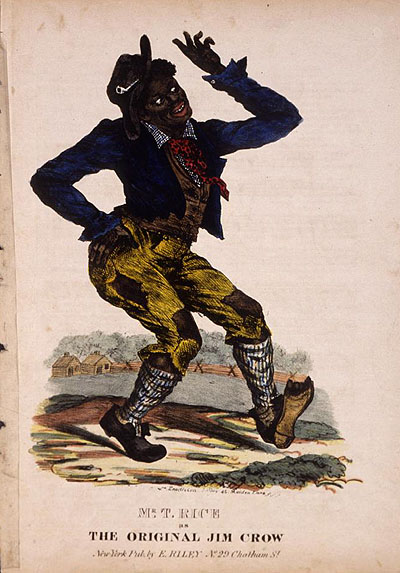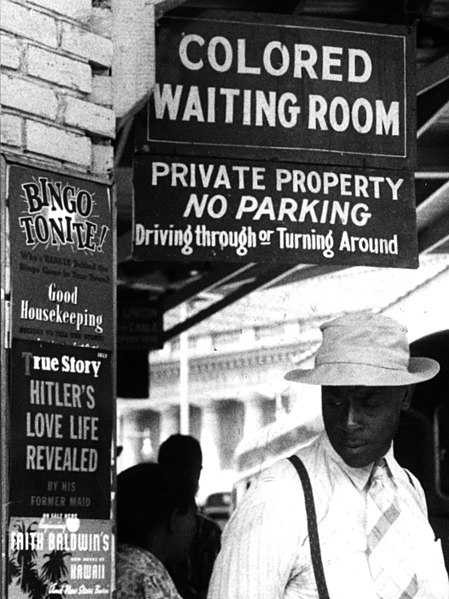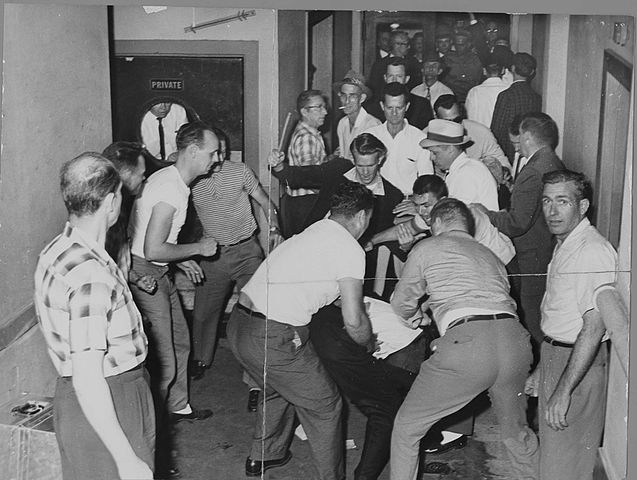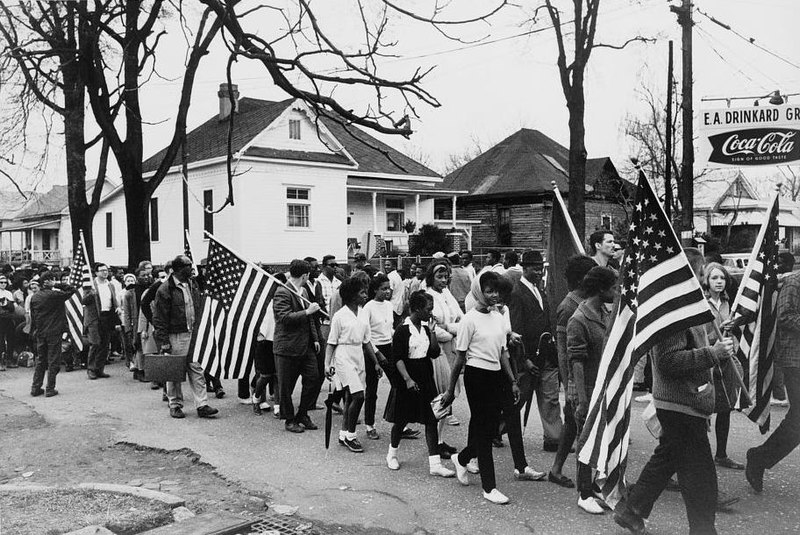Jim Crow refers to a system of state and local laws, as well as social customs, that enforced racial segregation and discrimination against African Americans in the United States.
The Jim Crow era began in the late 19th century and lasted until the mid-20th century, predominantly in the Southern states. These laws and practices were deeply rooted in white supremacy and aimed to maintain the dominance of white Americans over African Americans.
The term “Jim Crow” originated from a minstrel show character performed by white actors in blackface. This character perpetuated racist stereotypes and portrayed African Americans in a demeaning and derogatory manner. The name Jim Crow became synonymous with the racially discriminatory laws and practices that characterized the era.
Under Jim Crow, African Americans were subjected to a wide range of segregation and discrimination. Laws mandated racial segregation in public facilities, such as schools, transportation, restaurants, restrooms, and parks.
African Americans were forced to use separate and often inferior facilities, denying them equal access and reinforcing racial hierarchy.
Also Read: Facts About the Voting Rights Act of 1965
The civil rights movement of the mid-20th century played a crucial role in dismantling Jim Crow. Activists, such as Rosa Parks, Martin Luther King Jr., and countless others, fought against racial segregation and discrimination through civil disobedience, protests, and legal challenges.
Landmark Supreme Court cases, such as Brown v. Board of Education in 1954, ruled against racial segregation and challenged the legal foundations of Jim Crow.
Jim Crow Facts
1. Jim Crow laws were a set of state and local laws enacted in the United States between the late 19th century and the mid-20th century
Jim Crow laws were a set of state and local laws enacted in the United States between the late 19th century and the mid-20th century.
Also Read: Jim Crow Laws Timeline
These laws were primarily implemented in the Southern states, although they also existed in other regions of the country. The term “Jim Crow” is often used to refer to the entire system of racial segregation and discrimination during that era.
2. The term “Jim Crow” originates from a minstrel show character performed by white actors in blackface
The term “Jim Crow” originated from a minstrel show character performed by white actors in blackface. Minstrel shows were popular in the 19th and early 20th centuries and featured performers who would mock and caricature African Americans using racist stereotypes.
The character of Jim Crow was portrayed as a lazy, ignorant, and highly exaggerated portrayal of a black person. This character became synonymous with the racial stereotypes and oppression faced by African Americans.

3. The Jim Crow laws enforced segregation in public facilities such as schools, transportation, restaurants, and restrooms
The Jim Crow laws enforced racial segregation in public facilities such as schools, transportation, restaurants, restrooms, and parks.
These laws mandated separate spaces for African Americans and white Americans, with the facilities for African Americans often being inferior in quality and resources. The segregation extended to various aspects of daily life, aiming to reinforce racial hierarchy and maintain white dominance.
4. Jim Crow laws extended beyond segregation and encompassed various aspects of life, including housing, employment, voting rights, and access to public services
Jim Crow laws extended beyond segregation and permeated multiple areas of life. They encompassed housing, employment, voting rights, access to public services, and more.
African Americans faced discriminatory practices in housing, often being confined to segregated neighborhoods with limited resources and opportunities.
They also faced employment discrimination, as many industries and jobs were effectively closed off to African Americans.
Additionally, Jim Crow laws aimed to suppress the political power of African Americans by imposing voting restrictions, such as poll taxes, literacy tests, and other discriminatory measures.

5. Plessy v. Ferguson was a landmark 1896 Supreme Court case that upheld the constitutionality of racial segregation under the “separate but equal” doctrine
The legal foundation for Jim Crow laws was established in the 1896 Supreme Court case Plessy vs Ferguson. In this case, the Court upheld the constitutionality of racial segregation under the “separate but equal” doctrine.
The case revolved around Homer Plessy, an African American man who was arrested for refusing to leave a whites-only train car. The Supreme Court ruled that segregation was constitutional as long as the separate facilities for different races were deemed “equal” in quality.
This decision provided a legal basis for the implementation of Jim Crow laws and reinforced racial segregation for decades to come. It took nearly six decades for the “separate but equal” doctrine to be overturned in the landmark 1954 case Brown v. Board of Education.
6. Many African Americans challenged Jim Crow laws through civil disobedience, protests, and legal action
Many African Americans challenged Jim Crow laws through civil disobedience, protests, and legal action. Throughout the Jim Crow era, African Americans and their allies fought against racial segregation and discrimination.
One of the most notable figures in this struggle was Rosa Parks, whose refusal to give up her bus seat to a white person in Montgomery, Alabama, in 1955 sparked the Montgomery Bus Boycott.
The boycott, led by Martin Luther King Jr., lasted for over a year and became a significant turning point in the civil rights movement.
7. Despite the “separate but equal” doctrine, facilities designated for African Americans were often far from equal
Despite the “separate but equal” doctrine upheld by the Plessy v. Ferguson decision, facilities designated for African Americans were often far from equal.
Schools for African American children were frequently underfunded, lacked resources, and operated in overcrowded conditions compared to predominantly white schools. This disparity in educational opportunities was a stark manifestation of the systemic inequality inherent in Jim Crow laws.

8. African Americans faced various forms of discrimination and violence during the Jim Crow era
African Americans faced various forms of discrimination and violence during the Jim Crow era. Lynchings, mob violence, and racial terror were prevalent, particularly in the Southern states.
African Americans were often targeted for asserting their rights, challenging the status quo, or simply for existing in spaces designated for white people.
These acts of violence were intended to maintain racial hierarchy, instill fear, and enforce social control over African American communities.
9. The Great Migration, which occurred between 1916 and 1970, saw millions of African Americans leave the rural South
The Great Migration, which occurred between 1916 and 1970, was a significant demographic shift in which millions of African Americans left the rural South to seek better opportunities in the urban North and West.
The oppressive nature of Jim Crow laws, coupled with limited economic prospects and the lure of industrial jobs in urban areas, motivated many African Americans to migrate.
The Great Migration profoundly impacted the social, cultural, and political landscape of both the regions African Americans left and the places they migrated to.
10. In 1954, the Supreme Court case Brown v. Board of Education declared racial segregation in public schools unconstitutional
In 1954, the Supreme Court case Brown v. Board of Education delivered a landmark decision that declared racial segregation in public schools unconstitutional.
The Court overturned the “separate but equal” doctrine established in Plessy v. Ferguson, stating that segregated educational facilities were inherently unequal and violated the rights of African American children.
The ruling marked a significant victory for the civil rights movement, as it challenged the legal foundation of Jim Crow and set the stage for subsequent efforts to dismantle segregation and advance racial equality.
Brown v. Board of Education became a pivotal moment in American history and remains a symbol of the fight against racial discrimination.
11. The Civil Rights Act of 1964 was a landmark federal legislation that outlawed discrimination based on race, color, religion, sex, or national origin
The Civil Rights Act of 1964 was a landmark federal legislation that aimed to end racial segregation and discrimination. It prohibited discrimination based on race, color, religion, sex, or national origin in various areas, including public accommodations, employment, and federally funded programs.
The act was a significant step toward dismantling Jim Crow laws and promoting equality in the United States. It also established the Equal Employment Opportunity Commission (EEOC) to address employment discrimination issues.

12. The Voting Rights Act of 1965 aimed to overcome barriers that prevented African Americans from exercising their right to vote
The Voting Rights Act of 1965 aimed to overcome barriers that prevented African Americans from exercising their right to vote. It targeted voting practices that disproportionately affected minority voters, such as literacy tests, poll taxes, and other discriminatory measures.
The act provided federal oversight and enforcement mechanisms to ensure fair access to the voting booth.
It played a crucial role in increasing African American voter registration and participation, empowering African Americans politically and challenging the discriminatory practices that had undermined their political power during the Jim Crow era.
13. Systemic racism and racial disparities persist in various forms to this day
While the Civil Rights Act and Voting Rights Act helped dismantle the legal framework of Jim Crow, systemic racism and racial disparities persist in various forms to this day.
Despite legal advancements, African Americans and other marginalized communities continue to face social, economic, and educational inequalities.
Racial discrimination, implicit bias, and disparities in areas such as criminal justice, housing, and healthcare contribute to ongoing challenges and the fight for racial justice.
14. The term “Jim Crow” is also used metaphorically to describe any laws, policies, or practices that perpetuate discrimination, segregation, or inequality
The term “Jim Crow” is also used metaphorically to describe any laws, policies, or practices that perpetuate discrimination, segregation, or inequality. It highlights the enduring legacy of the Jim Crow era and serves as a reminder of the work still needed to achieve full equality and justice for all.
The metaphorical use of the term emphasizes the need to confront and address systems and structures that uphold racial inequities, both within the United States and globally.
15. The legacy of Jim Crow continues to shape American society and conversations about race
The legacy of Jim Crow continues to shape American society and conversations about race. Efforts to address racial injustice and achieve true equality are ongoing.
Movements such as Black Lives Matter and the fight against systemic racism draw on the historical experiences of Jim Crow to call attention to the systemic oppression and demand justice.
Understanding the history and impact of Jim Crow is vital in order to build a more inclusive and equitable society. It reminds us of the importance of challenging racism, dismantling discriminatory systems, and fostering a society that upholds the dignity and rights of all individuals.
